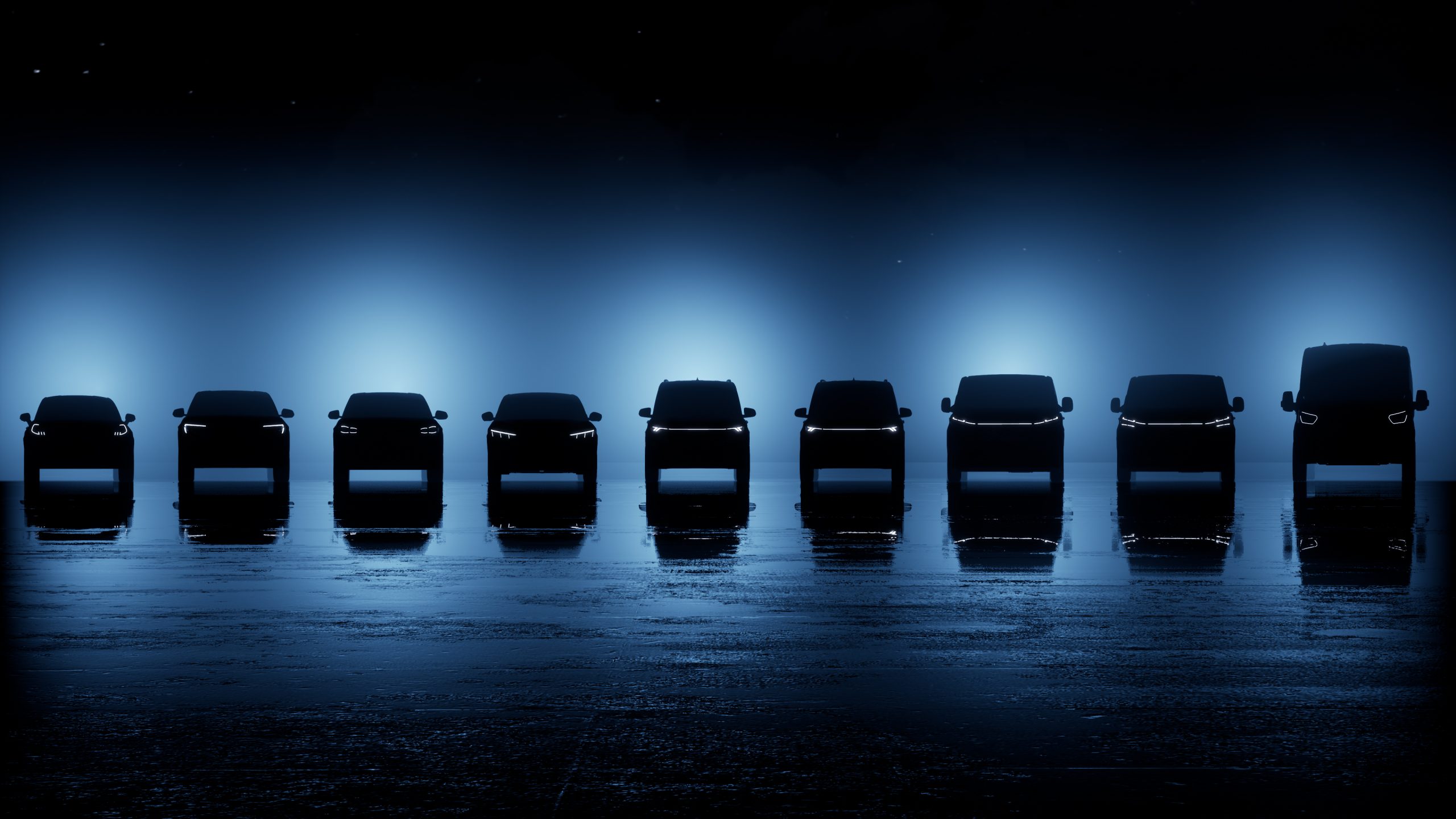
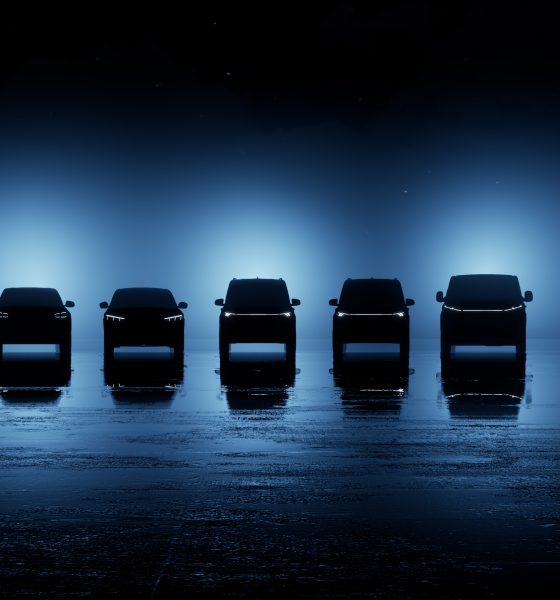
News
Ford Model e unit announces massive expansion of EV initiative in Europe: 7 new EVs by 2024
Ford’s electric vehicle unit — known as Model e — announced today that it would take massive steps to expand its electric vehicle project in Europe. Ford, which recently split its electric vehicle and combustion engine businesses into two divisions, is aiming to roll out seven new electric vehicles in Europe by 2024 with an annual production capacity of 600,000 vehicles by 2026.
Ford announced the expansion plan today, recognizing the accelerating pace of electrification in the European market. “I am delighted to see the pace of change in Europe – challenging our entire industry to build better, cleaner, and more digital vehicles. Ford is all-in and moving fast to meet the demand in Europe and around the globe,” Ford CEO Jim Farley said in a statement. “This is why we have created Ford Model e – allowing us to move at the speed of a start-up to build electric vehicles that delight and offer connected services unique to Ford and that are built with Ford-grade engineering and safety.”
Ford’s Model e division aims to take advantage of a Tesla-like business model that completely separates the electric vehicle projects from the traditional combustion engine powertrains that Ford built its legacy on. As one of the most-committed legacy automakers in the transition to electrification, Ford recently announced it would commit to a production goal of 600,000 EVs by the end of 2023.
In Europe, electric vehicles have become extremely popular, becoming a more common choice of consumers than combustion engine vehicles in some regions. Ford is turning some focus toward this market as it is likely to be one of the biggest catalysts to EV sales company-wide. Ford said it expects annual sales in Europe to exceed 600,000 units in 2026, reaffirming its intention to deliver a 6 percent EBIT margin in Europe in 2023.
“Our march toward an all-electric future is an absolute necessity for Ford to meet the mobility needs of customers across a transforming Europe,” Ford of Europe Chairman Stuart Rowley said. “It’s also about the pressing need for greater care of our planet, making a positive contribution to society and reducing emissions in line with the Paris Climate Agreement.”
Seven New EVs by 2024
With the Mustang Mach-E already having a successful introduction into the European market, Ford will also welcome the E-Transit to the region in Q2 2022. By 2024, Ford plans to introduce seven additional models to its electric lineup in Europe. It will include three new passenger vehicles and four new commercial cars.
In 2023, Ford will begin production of an all-new passenger EV. The company says it will be a “medium-sized crossover, built in Cologne with a second electric vehicle added to the Cologne production line-up in 2024.” Ford will also introduce an electric version of the Ford Puma. It will be produced in Craiova, Romania, starting in 2024.
Ford, which recently split its electric vehicle and combustion engine businesses into two divisions, is aiming to roll out seven new electric vehicles in Europe by 2026 with an annual production capacity of 600,000 vehicles. (Credit: Ford)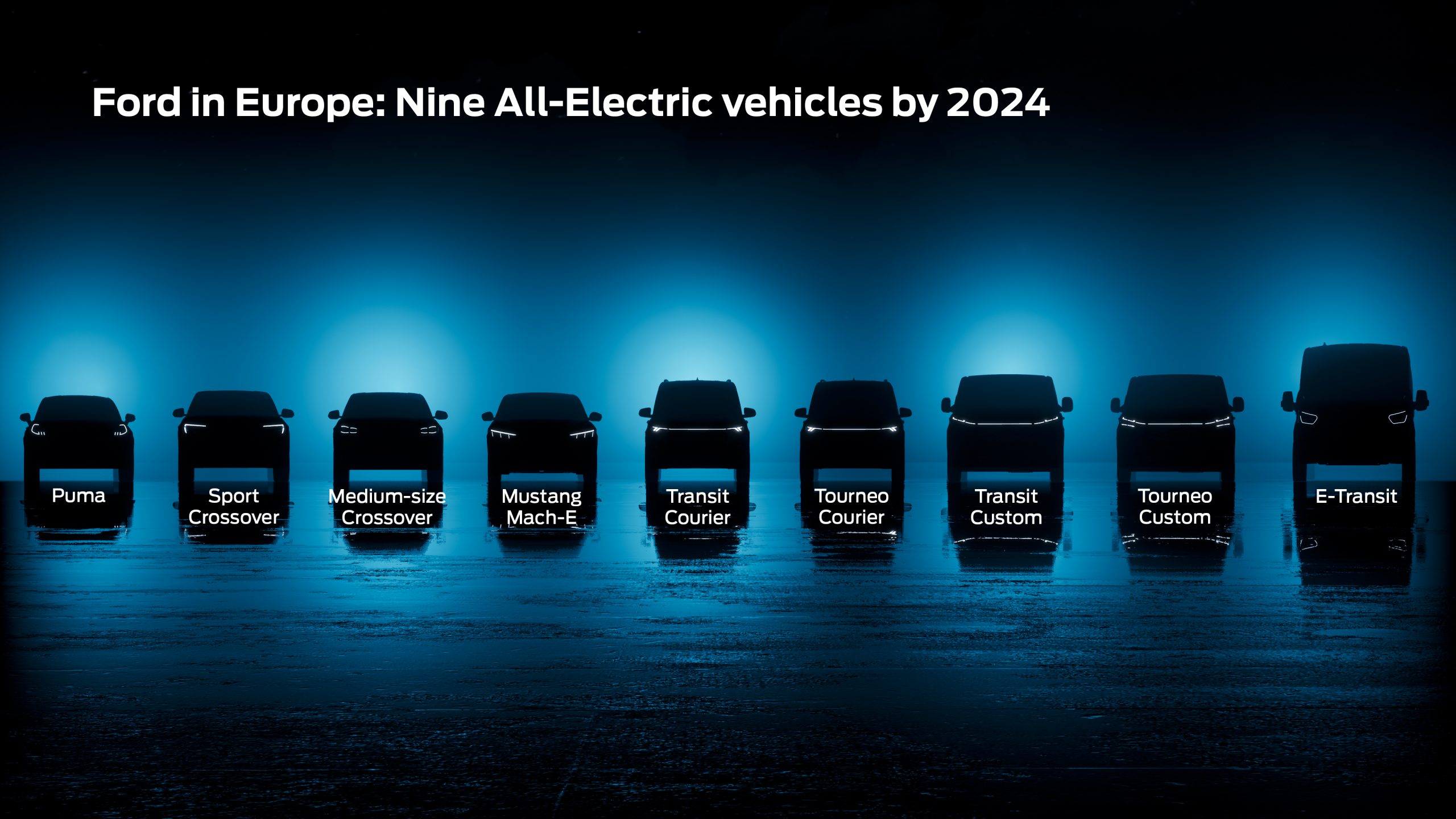
Ford is Europe’s top-selling commercial vehicle brand, and the company plans to introduce several new electric models of its Transit van — “the all-new Transit Custom one-tonne van and Tourneo Custom multi-purpose vehicle in 2023, and the smaller, next-generation Transit Courier van and Tourneo Courier multi-purpose vehicle in 2024.”
“These new Ford electric vehicles signal what is nothing less than the total transformation of our brand in Europe – a new generation of zero-emission vehicles, optimized for a connected world, offering our customers truly outstanding user experiences,” Rowley added.
Ford’s Cologne, Germany EV Hotspot
Ford also said that the first all-electric passenger vehicle to come out of the new Electrification Centre in Cologne will be a five-seat, medium-sized crossover. Crossovers are a widely popular body style and accounted for 58 percent of all Ford passenger vehicles sold in Europe in 2021. Ford plans to unveil the name and design of the new crossover in 2022. Production will begin in 2023.
Ford’s Cologne Electrification Center (Credit: Ford)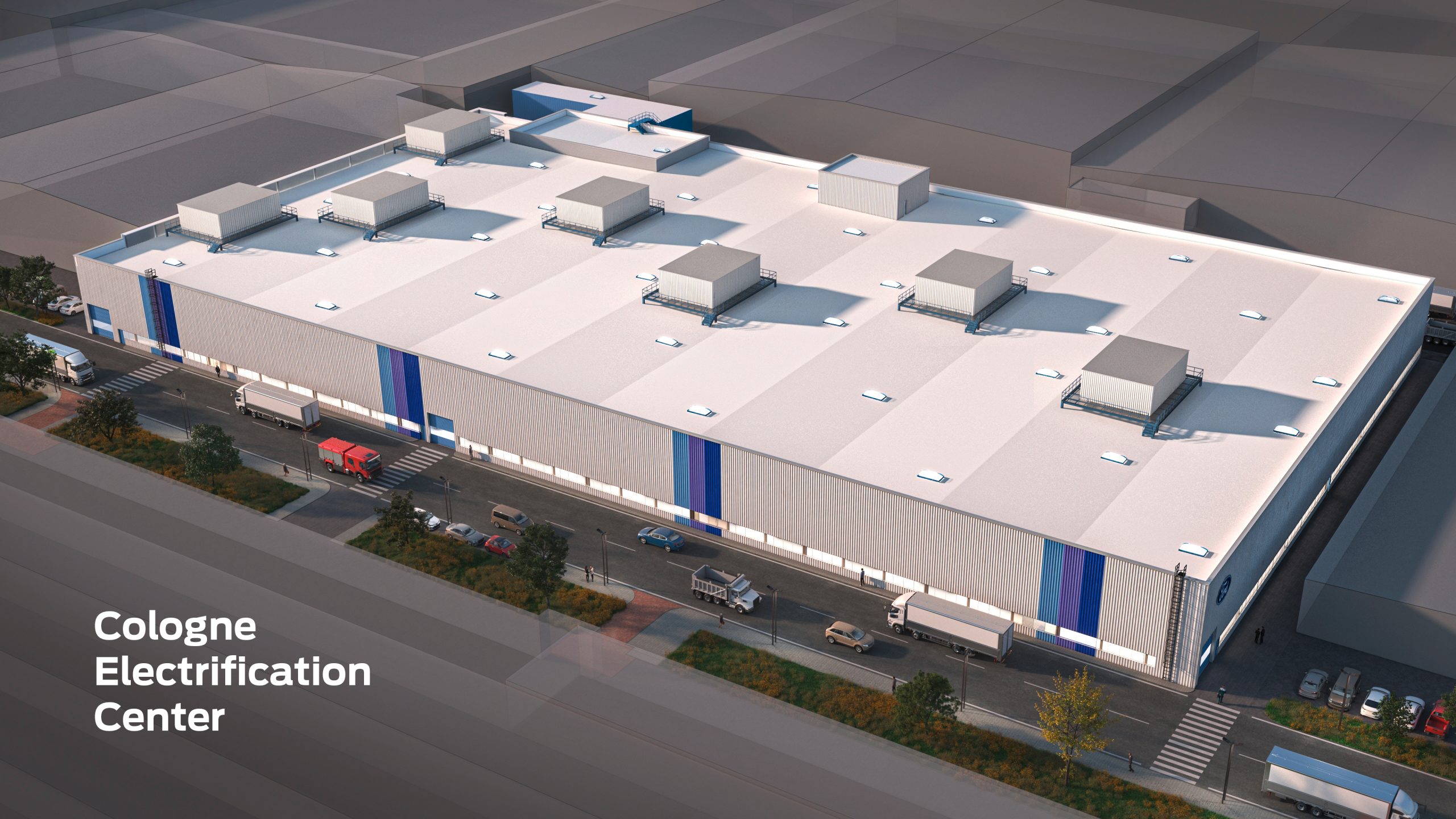
Additionally, Ford said its total investment in Cologne is expected to be $2 billion with the investment including plans for a new battery assembly facility that will begin production in 2024. The automaker projects at least 1.2 million vehicles produced at the Cologne Electrification Centre by 2030.
New battery partnership with SK On Co., Ltd., and Koç Holding
Ford announced that it also signed a non-binding Memorandum of Understanding for a new, industry-leading joint venture in Turkey with battery manufacturers SK On Co., Ltd. and Koç Holding. The plant will be located near Ankara, the country’s capital, and will manufacture high-Nickel Nickel-Manganese-Cobalt (NMC) cells for assembly into battery array modules. Nickel cells have been a focus of many large automakers transitioning to electric cars, as it is widely available. However, surging prices of the metal have contributed to a potential delay in these plans, at least in the short term.
Production is expected to start as early as mid-decade, Ford said, with annual capacity likely to be between 30 and 45 Gigawatt hours.
Ford said the investment will also be supported by the Turkish Government and will benefit large and small commercial vehicle operators across Europe, all while decreasing CO2 emissions.
EV Production Boost in Romania
Ford will also introduce an electric version of its best-selling European vehicle, the Puma. European customers will be able to purchase an all-electric version of the vehicle in 2024. Additionally, the Transit Courier and Tourneo Courio will be produced a the plant in 2023, with all-electric versions being offered the following year.
Ford’s joint venture with Koç Holding, known as Ford Otosan, will assume ownership of the Craiova, Romania plant. “We welcome this opportunity to grow our joint venture with Koc Holding and leverage this strategic partnership to better utilize our resources and know-how in Romania,” Rowley said. “Ford Craiova is today a strong success story, and we believe that through Ford Otosan’s experience and expertise in electrification and commercial vehicles it can reach even higher levels of achievement.”
I’d love to hear from you! If you have any comments, concerns, or questions, please email me at joey@teslarati.com. You can also reach me on Twitter @KlenderJoey, or if you have news tips, you can email us at tips@teslarati.com.

Cybertruck
Tesla Cybertruck earns IIHS Top Safety Pick+ award
To commemorate the accolade, the official Cybertruck account celebrated the milestone on X.

The Tesla Cybertruck has achieved the Insurance Institute for Highway Safety’s (IIHS) highest honor, earning a Top Safety Pick+ rating for 2025 models built after April 2025.
The full-size electric pickup truck’s safety rating is partly due to the vehicle’s strong performance in updated crash tests, superior front crash prevention, and effective headlights, among other factors. To commemorate the accolade, the official Cybertruck account celebrated the milestone on X.
Cybertruck’s IIHS rating
As per the IIHS, beginning with 2025 Cybertruck models built after April 2025, changes were made to the front underbody structure and footwell to improve occupant safety in driver-side and passenger-side small overlap front crashes. The moderate overlap front test earned a good rating, and the updated side impact test also received stellar marks.
The Cybertruck’s front crash prevention earned a good rating in pedestrian scenarios, with the standard Collision Avoidance Assist avoiding collisions in day and night tests across child, adult crossing, and parallel paths. Headlights with high-beam assist compensated for limitations, contributing to the top award.
Safest and most autonomous pickup
The Cybertruck is one of only two full-size pickups to receive the IIHS’ Top Safety Pick + rating. It is also the only one equipped with advanced self-driving features via Tesla’s Full Self-Driving (Supervised) system. Thanks to FSD, the Cybertruck can navigate inner city streets and highways on its own with minimal supervision, adding a layer of safety beyond passive crash protection.
Community reactions poured in, with users praising the vehicle’s safety rating amidst skepticism from critics. Tesla itself highlighted this by starting its X post with a short clip of a Cybertruck critic who predicted that the vehicle will likely not pass safety tests. The only question now is, of course, if the vehicle’s Top Safety Pick+ rating from the IIHS will help the Cybertruck improve its sales.
News
Tesla stands to gain from Ford’s decision to ditch large EVs
Tesla is perhaps the biggest beneficiary of Ford’s decision, especially as it will no longer have to deal with the sole pure EV pickup that outsold it from time to time: the F-150 Lightning.
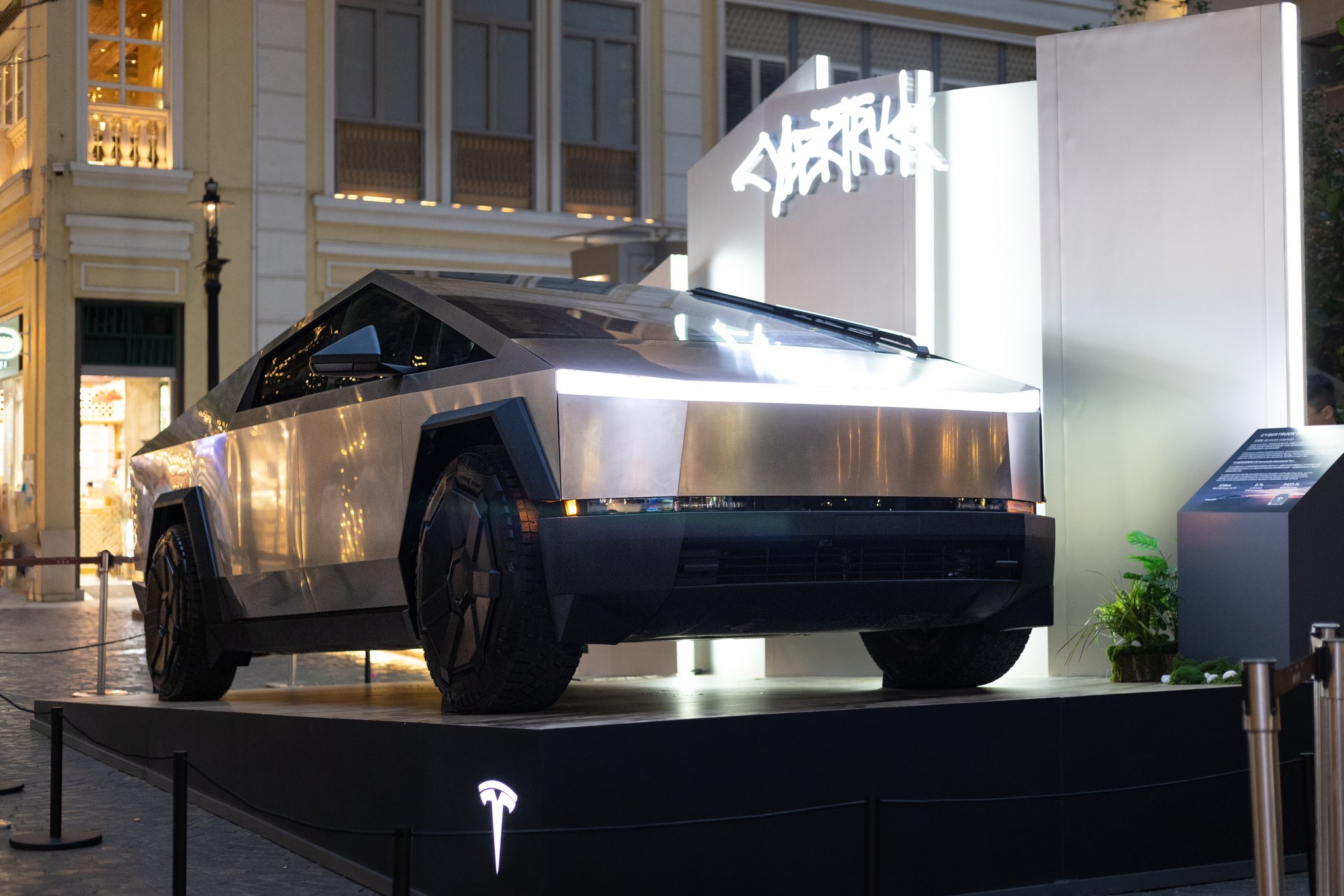
Ford’s recent decision to abandon production of the all-electric Ford F-150 Lightning after the 2025 model year should yield some advantages for Tesla.
The Detroit-based automaker’s pivot away from large EVs and toward hybrids and extended-range EVs that come with a gas generator is proof that sustainable powertrains are easy on paper, but hard in reality.
Tesla is perhaps the biggest beneficiary of Ford’s decision, especially as it will no longer have to deal with the sole pure EV pickup that outsold it from time to time: the F-150 Lightning.
Here’s why:
Reduced Competition in the Electric Pickup Segment
The F-150 Lightning was the Tesla Cybertruck’s primary and direct rival in the full-size electric pickup market in the United States. With Ford’s decision to end pure EV production of its best-selling truck’s electric version and shifting to hybrids/EREVs, the Cybertruck faces significantly less competition.
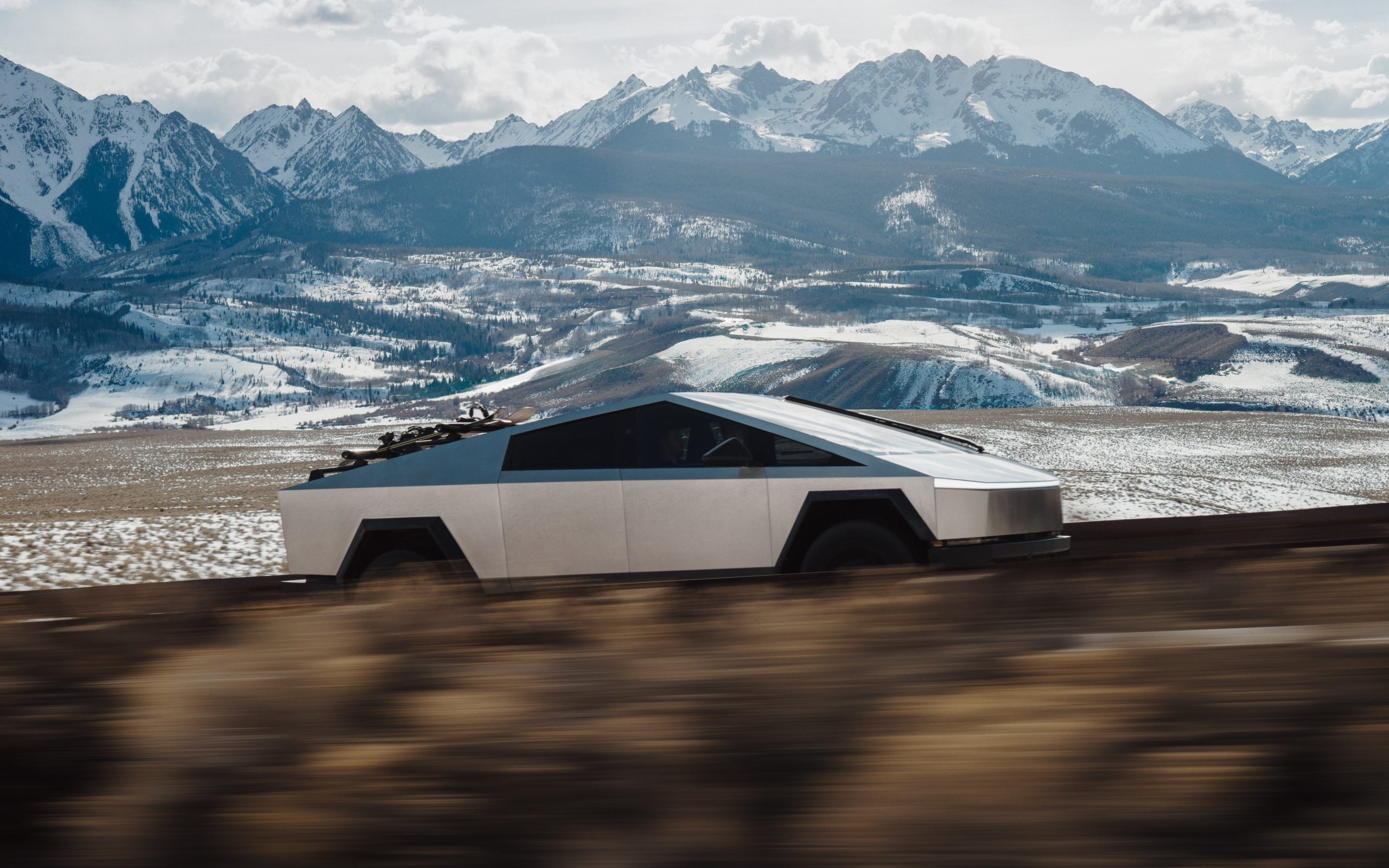
Credit: Tesla
This could drive more fleet and retail buyers toward the Cybertruck, especially those committed to fully electric vehicles without a gas generator backup.
Strengthened Market Leadership and Brand Perception in Pure EVs
Ford’s pullback from large EVs–citing unprofitability and lack of demand for EVs of that size–highlights the challenges legacy automakers face in scaling profitable battery-electric vehicles.
Tesla, as the established leader with efficient production and vertical integration, benefits from reinforced perception as the most viable and committed pure EV manufacturer.
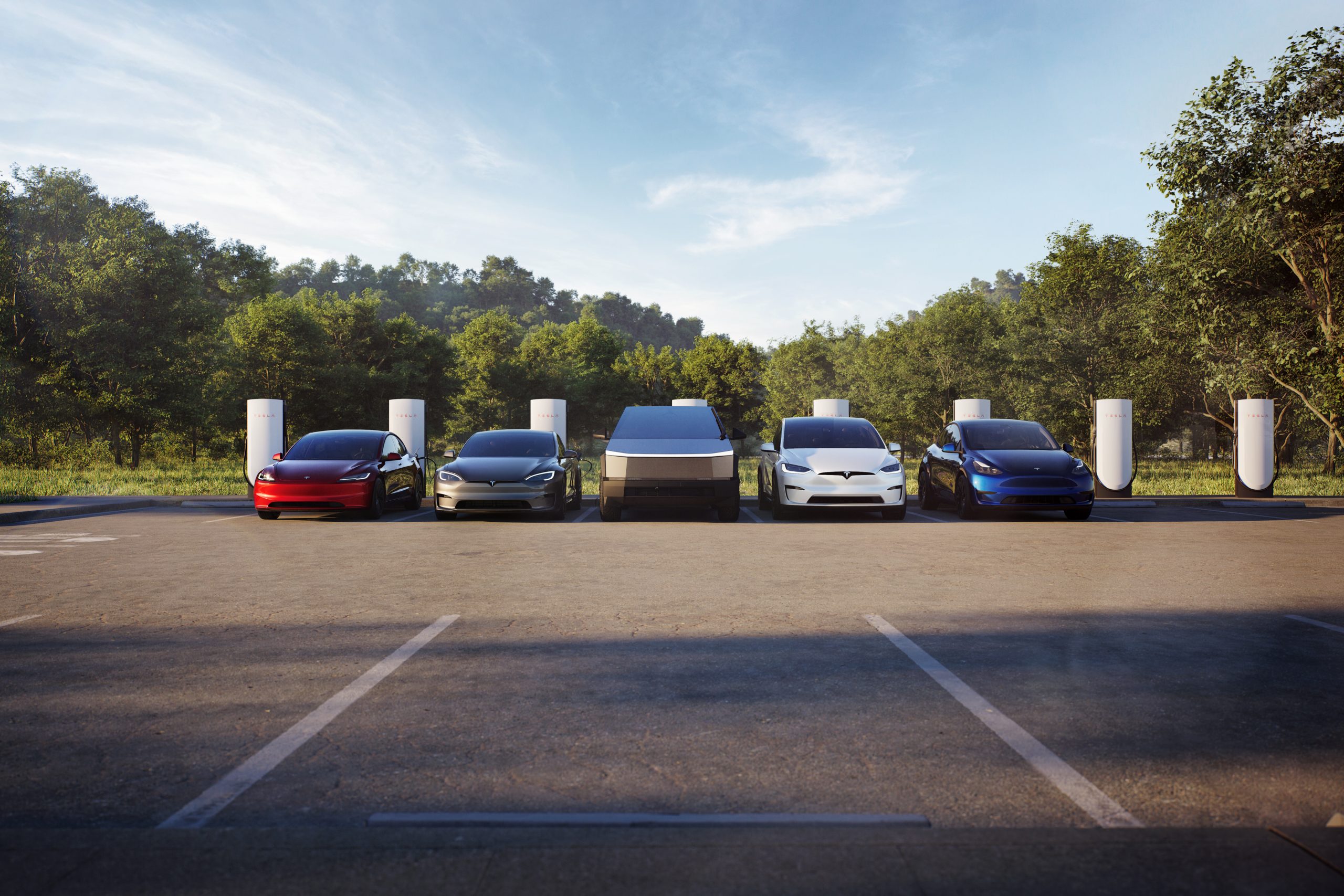
Credit: Tesla
This can boost consumer confidence in Tesla’s long-term ecosystem over competitors retreating to hybrids. With Ford making this move, it is totally reasonable that some car buyers could be reluctant to buy from other legacy automakers.
Profitability is a key reason companies build cars; they’re businesses, and they’re there to make money.
However, Ford’s new strategy could plant a seed in the head of some who plan to buy from companies like General Motors, Stellantis, or others, who could have second thoughts. With this backtrack in EVs, other things, like less education on these specific vehicles to technicians, could make repairs more costly and tougher to schedule.
Potential Increases in Market Share for Large EVs
Interestingly, this could play right into the hands of Tesla fans who have been asking for the company to make a larger EV, specifically a full-size SUV.
Customers seeking large, high-capability electric trucks or SUVs could now look to Tesla for its Cybertruck or potentially a future vehicle release, which the company has hinted at on several occasions this year.
With Ford reallocating resources away from large pure EVs and taking a $19.5 billion charge, Tesla stands to capture a larger slice of the remaining demand in this segment without a major U.S. competitor aggressively pursuing it.
News
Ford cancels all-electric F-150 Lightning, announces $19.5 billion in charges
“Rather than spending billions more on large EVs that now have no path to profitability, we are allocating that money into higher returning areas, more trucks and van hybrids, extended range electric vehicles, affordable EVs, and entirely new opportunities like energy storage.”
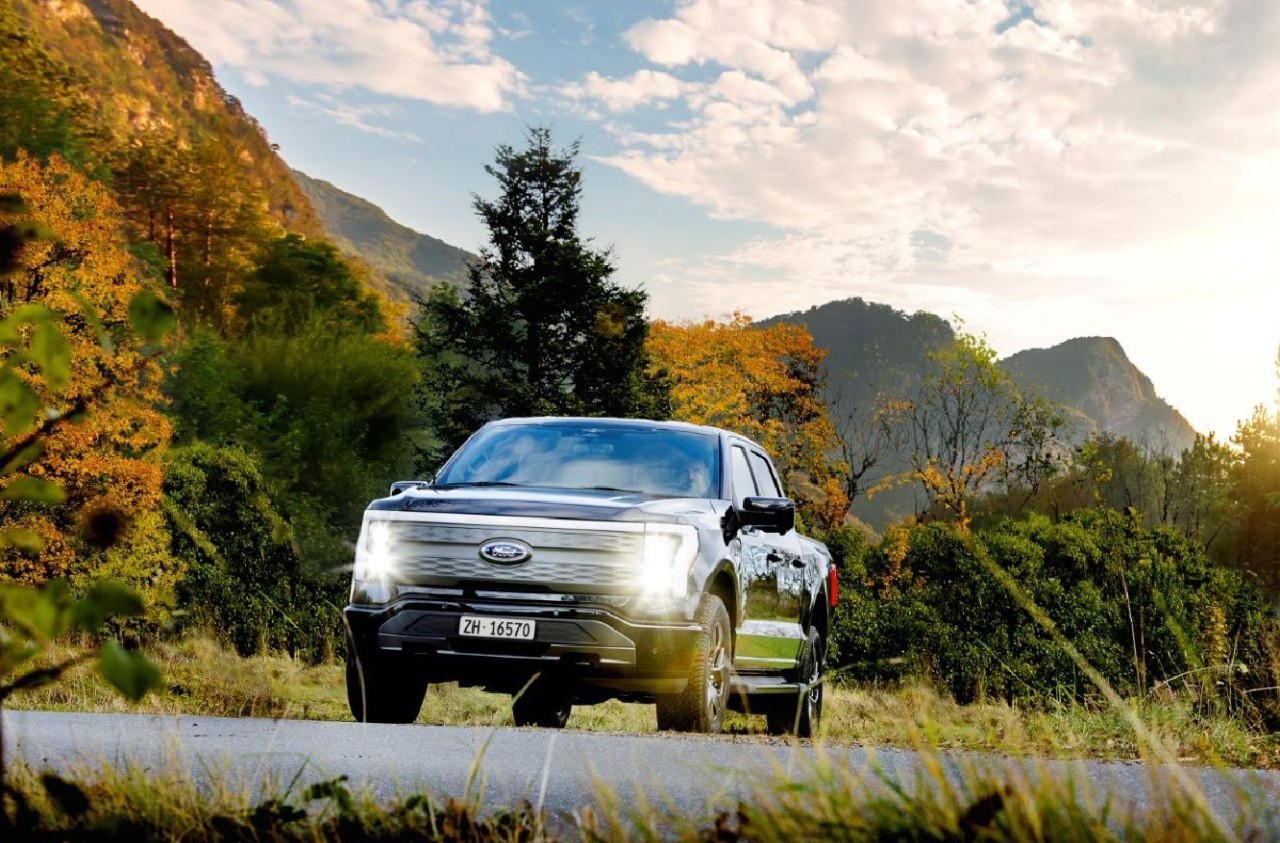
Ford is canceling the all-electric F-150 Lightning and also announced it would take a $19.5 billion charge as it aims to quickly restructure its strategy regarding electrification efforts, a massive blow for the Detroit-based company that was once one of the most gung-ho on transitioning to EVs.
The announcement comes as the writing on the wall seemed to get bolder and more identifiable. Ford was bleeding money in EVs and, although it had a lot of success with the all-electric Lightning, it is aiming to push its efforts elsewhere.
It will also restructure its entire strategy on EVs, and the Lightning is not the only vehicle getting the boot. The T3 pickup, a long-awaited vehicle that was developed in part of a skunkworks program, is also no longer in the company’s plans.
Instead of continuing on with its large EVs, it will now shift its focus to hybrids and “extended-range EVs,” which will have an onboard gasoline engine to increase traveling distance, according to the Wall Street Journal.
“Ford no longer plans to produce select larger electric vehicles where the business case has eroded due to lower-than-expected demand, high costs, and regulatory changes,” the company said in a statement.
🚨 Ford has announced it is discontinuing production of the F-150 Lightning, as it plans to report a charge of $19.5 billion in special items.
The Lightning will still be produced, but instead with a gas generator that will give it over 700 miles of range.
“Ford no longer… pic.twitter.com/ZttZ66SDHL
— TESLARATI (@Teslarati) December 15, 2025
While unfortunate, especially because the Lightning was a fantastic electric truck, Ford is ultimately a business, and a business needs to make money.
Ford has lost $13 billion on its EV business since 2023, and company executives are more than aware that they gave it plenty of time to flourish.
Andrew Frick, President of Ford, said:
“Rather than spending billions more on large EVs that now have no path to profitability, we are allocating that money into higher returning areas, more trucks and van hybrids, extended range electric vehicles, affordable EVs, and entirely new opportunities like energy storage.”
CEO Jim Farley also commented on the decision:
“Instead of plowing billions into the future knowing these large EVs will never make money, we are pivoting.”
Farley also said that the company now knows enough about the U.S. market “where we have a lot more certainty in this second inning.”








